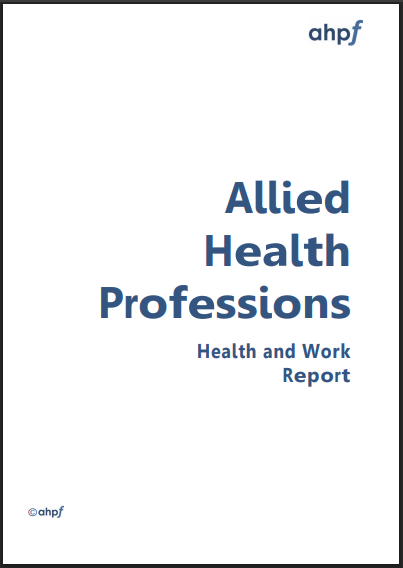Research shows work to be beneficial for both physical and mental health and wellbeing. Having routine and purpose can be very positive and finding a sense of ‘normal’ is often helpful for people after a diagnosis of a long-term health condition. However, returning to work after a long period of absence may feel scary. You may have questions about what will be expected of you, or what support is available to help you adjust and find your feet.
Returning to work often involves a mixed approach that draws on support from your healthcare team and your employer. You can read more about this below.
Role of the employer

Employers obviously play a very important role in helping you return to work, through making your work environment and routine more accessible and supportive. In doing so, employers need to consider reasonable adjustments that can be made to support employees with long-term conditions.
Following any diagnosis and treatment, it is important to plan a structured return to work. A phased return-to-work plan should include input from both employer and employee, with support from an occupational health department, if available. Employers are required to consider reasonable adjustments and a phased return to work under the under the Equality Act 2010. You can read more about reasonable adjustments here.
What do you need to be aware of when having a return to work conversation?
It is entirely your choice whether or not you talk to work about your health problems and support needs. You do not need to disclose anything you do not want to. However, if you would like your employer to make reasonable adjustments to support your return to work, it’s important that they understand what support and changes you may need.
A successful conversation about this might include:
- Any concerns you have about returning to work and the impact this could have on your condition
- Possible changes to your confidence after your diagnosis and treatment
- Agreeing what you are, and aren’t, comfortable sharing with other people at work
- Providing your employer with some information about your condition and treatment (if you wish to)
Following health issues, an employee is often the best person to know what further support they may require and
have good ideas on how to achieve this. Be active in your own return to work plan, think about the demands of the job and the support you will need as you return. You may not need to be 100% fit before returning to work, but can still work effectively with support. Reasonable adjustments should be negotiated with the employer, but remember any fitness for work guidance is ‘advisory’ and can be amended by the employee and employer. You may find you return to fitness sooner than expected or you may suffer additional health issues and consequently take longer get back to work.
The Allied Health Professionals (AHP) Health and Work Report
The AHP Health and Work Report is a form that can be filled out to detail what support an employee needs to be able to continue working, or return to work after absence. It is used by employees, employers and healthcare teams to collect this information, and share with employers. The report provides a consistent and nationally-recognised tool to advise employees on their fitness for work. It has been designed to provide information on the functional impact of a patient’s reported problem and to suggest options that may support the patient to remain in, or return to, work.
The AHP Health and Work Report includes details about what you as the patient can do, as well as highlighting
difficulties and suggest adjustments within the workplace to facilitate a return to employment. The advantage of an allied healthcare professional providing this report is they often have greater and more up-to-date knowledge of you than a GP, if they have been working with you. It is important to remember that any report is advisory. Either the employer or employee may choose not to take this advice or provide alternative solutions.
However, if a recommendation provides practical solutions which can be accommodated, this will improve the likelihood of advice being taken and better relations between employer and employee.
Recommendations in AHP reports should aim to be:
- Practical and easily understood without having a negative impact on other staff members
- Specific, easily achievable, realistic and timely, and with timescales for adjustments clearly stated
- Sensitive to any costs involved
- Personal to the individual. Simple but cleverly thought out recommendations can be very effective when personal circumstances are considered
Phased to return following treatment
It is a good idea to have an extended phased return to normal working hours, to give you time to adjust slowly. Anything up to eight weeks is appropriate. The phased return should be negotiated between you, as an employee, and your immediate line manager. This is because you will both have an awareness of the working environment and tasks that need to be completed. You should aim to start with a few hours a day, either in the morning or afternoon, and gradually build up this time over the weeks. It is not advisable to work overtime or take on extra duties during this period.
During the discussion period, it is also useful to carry out a risk assessment for returning to work. The risk assessment should not be too ominous – it is just a sensible set of procedures to ensure you are as safe as you can be. If you have a condition that requires emergency medication, such as emergency hydrocortisone injections, it can be helpful to talk about situations where this may be required and what your work needs to do/know to support you.
Things to think about in a risk assessment:
1.Location
Do you have a long way to travel before even getting to work? Any long distance which will use energy? Do you have access to facilities should you need them? Is there a quiet place you can go to within the workplace should you need to?
2. Medication
Do you need people at work to know how to adminster emergency medication? Will you be able to take your medication when needed and have access to whatever you need to do this? You might want to set an alarm on your phone initially too, as a means of ensuring you take your meds at the right time, as it is easy to forget if you are very busy.
3. Activities
This is perhaps the most significant, as your working day will need to incorporate breaks and downtime to allow you to build in regular rest periods. You should try to have a balance of different types of activity throughout the day.
We use different amounts of energy for different tasks. Mental tasks can be as exhausting as physical ones, so try to strike a good balance and don’t forget social activities, which also use energy, though are usually more enjoyable. Always try to pace all your activities – both during work time and in preparation of these. You can read our Fatigue Management Booklet for more information about this.
4. Equipment
Make things as easy as possible for yourself by ensuring all equipment you use is in good working order. If you can avoid lifting heavy items for long periods, then this will help preserve energy levels. If you are able to get others to help you, rather than you moving about a lot initially, this will help too.
5. People
Make sure you have a good support network around you. If you encounter a difficult situation, be aware that this will cause stress which is normally catered for by an increase in cortisol. If you are now reliant on steroids because you are adrenal insufficient, your body will be unable to respond to this extra stress.
Make sure that your line manager is fully aware that you will need some time and space to get used to your new routine whilst you are adjusting to working life again. As long as your return to work is gradual and planned, there is no reason why it should not be successful. You will need to get into a routine, but this will come with time (and patience) and managing your pituitary condition will become automatic.
References
- Bajorek, Z. Hind, A. and Bevan, S. 2016. The impact of long-term conditions on employment and the wider UK economy. The Work Foundation. Available here (Accessed 4th September 2025)
- National Institute for Health and Care Excellence, 2016. Workplace Health: Management Practices. Available here (Accessed 4th September 2025)
- Royal College of Occupational Therapists (2021) Specialist Work Section
- Royal College of Occupational Therapists (2021). The AHP Health and Work Report. Available here (Accessed 4th September 2025)









